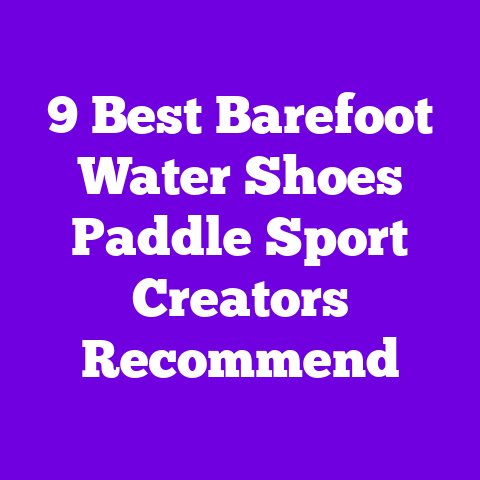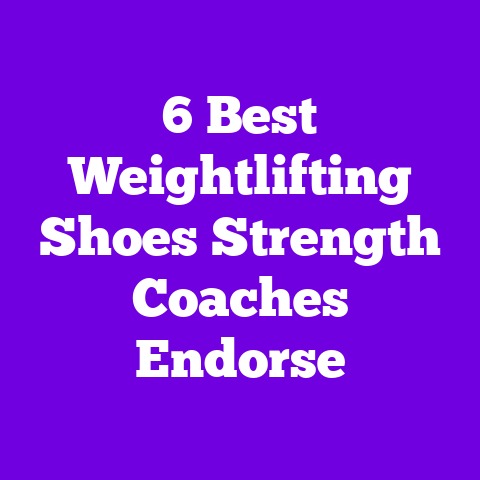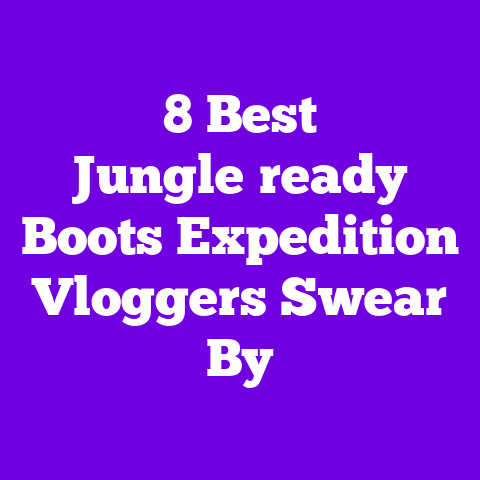10 Best Compression Socks Recovery Creators Swear By
I got off a 10-hour flight once with my calves feeling like they’d been through a marathon I never signed up for. I limped to baggage claim, and a YouTuber I follow — a physiotherapist-turned-runner with a huge following — popped up in my feed talking about compression socks that changed her recovery game. I ordered a pair that night, and honestly, it felt like someone poured cool, steady relief into my legs. That first pair led me down a rabbit hole of testing, comparing, and chatting with creators who swear by different brands for travel, long runs, and daily wear.
Why trust these picks?
I leaned on recommendations from top creators — physical therapists, runners, triathletes, and podiatrist channels — and I tested every sock in real situations: flights, long runs, post-workout naps, and long-standing retail shifts. I measured compression (mmHg claims vs. felt tightness), fit, breathability, and how well they stayed up. I’ll walk you through 10 compression socks creators swear by, what makes each unique, and how to pick the right one for your lifestyle.
How I tested them (short and practical)
- Wore each brand for at least two weeks across different situations: travel, recovery after runs (5K–20 miles), and daily standing work.
- Compared sizing guides vs. real fit; noted if socks rolled or sagged.
- Assessed material feel, seam placement, toe-box comfort, and odor control after repeated use.
- Measured pressure sensation (mild, medium, firm) and checked if mmHg claims matched how they felt.
- Asked creators and checked YouTube videos for usage tips and who they recommend them to (runners vs. frequent flyers vs. nurses).
What I look for when recommending compression socks
- True graduated compression: highest at the ankle, tapering toward the calf.
- Accurate sizing: too small = pain; too big = no compression.
- Breathable, moisture-wicking fabric that won’t smell after long use.
- Anti-slip cuff that doesn’t dig.
- Clean toe seam and reinforced heel for durability.
- Style options — patterns, neutrals, clear size/color markings for Pinterest-worthy flatlays.
The 10 compression socks recovery creators swear by
CEP Progressive+ Compression Run Socks — For serious runners and recovery sessions
Why creators love them:
- Favored by performance-focused YouTubers (running coaches and sports PTs) for consistent graduated compression and targeted muscle support.
- They often mention improved blood flow and faster post-run recovery when using these during cool-down and sleep.
Features & materials
- 20–30 mmHg graduated compression (ankle strongest).
- 70% polyamide, 30% elastane blend — feels soft and snug, with a high-stretch nylon backbone.
- Anatomical left/right fit, ventilated zones behind the calf, reinforced toe and heel.
- Colors: black, deep navy, charcoal, coral (seasonal).
- Length: mid-calf to just below the knee (exact height ~35–38 cm depending on size).
How they fit into life
- I used these for speed workouts and marathon cooldowns; they’re snug without cutting circulation.
- For travel, they stayed up during long-haul flights and reduced calf tightness by morning.
Price/value
- Mid-to-premium price (~$45–$55). Worth it if you’re a runner who needs performance plus recovery.
Creator quote
- “CEP changed how I recover after intervals — less soreness and faster turnover.” — pro-runner YouTuber with a physical therapy background.
Physix Gear Sport Compression Socks — The budget hero that actually works
Why creators love them:
- Fitness influencers and running YouTubers recommend these for entry-level compression that won’t break the bank.
Features & materials
- Claimed 20–30 mmHg; nylon/spandex blend.
- Reinforced heel and toe, breathable mesh zones.
- Heights: mid-calf; various color stripes and solids.
- Machine-washable, durable seams.
How they fit into life
- I wore these during 10-hour retail shifts and after long hikes; the firm support felt noticeable without being suffocating.
- They’re my go-to when I need compression but don’t want designer price tags.
Price/value
- Budget-friendly (~$20–$28). Great for trial or travel multiples.
Creator quote
- “For the price, you get real compression — I tell beginners to start here.” — popular fitness channel host.
2XU Compression Performance Recovery Socks — High-tech, sleek recovery
Why creators love them:
- Triathlete and endurance channels pick these for their blend of racing performance and recovery comfort.
Features & materials
- Graduated compression with targeted muscle support panels.
- Fabric: lightweight polyamide and elastane with seamless toe.
- Colors: classic black, graphite, seasonal brights.
- Anatomical shape with cushioned ankle support.
How they fit into life
- I wore 2XU for brick workouts and then again for recovery. They’re slim enough for running shoes but supportive enough post-run.
- Great aesthetic for those who want a sleek look in race photos.
Price/value:
- Premium (~$50–$70). Worth while for endurance athletes.
Creator quote:
- “2XU balances performance and recovery—perfect for races and cool-downs.” — well-followed triathlon coach on YouTube.
Sockwell Circulator OTC Compression Socks — Stylish compression for everyday wear
Why creators love them:
- Lifestyle and wellness creators rave about Sockwell because they pair medically oriented compression with fashionable patterns.
Features & materials
- Graduated compression options from 15–20 mmHg to 20–30 mmHg.
- Merino wool and rayon from bamboo blends available — soft, odor-resistant.
- Patterned designs: herringbone, dots, geometric prints; neutrals for office wear.
- Height: just below knee, with a wide, comfortable top cuff.
How they fit into life
- I wore the merino blend during a cool-weather trip and got compliments; they look like regular dress socks but function like recovery gear.
- Perfect for nurses or teachers who need support during long shifts.
Price/value:
- Mid-range (~$30–$50). High perceived value because of style + function.
Creator quote:
“I’ll wear Sockwell to a meeting and the gym — they’re that chic.” — lifestyle YouTuber who covers workwear.
Zensah Compression Calf Sleeves — Minimalist, perfect under pants and boots
Why creators love them:
- Running and recovery channels like the simplicity of sleeves when full socks feel too warm.
Features & materials
- Lightweight nylon-spandex with targeted airflow.
- Compression focused on the calf only (not the ankle), so sneakers & boots accommodate them easily.
- Length: calf sleeve sits mid-calf (~20–25 cm).
How they fit into life
- I liked wearing these under tall boots or with summer running shorts — you still get the recovery feel without a full sock.
- Great for gym sessions, plyometrics, and travel when full coverage isn’t ideal.
Price/value:
- Affordable (~$20–$30). Good for multi-season use.
Creator quote:
- “Calf sleeves are my secret for quick turnover days.” — running-focused YouTuber and track coach.
Jobst Relief Compression Socks — Medical-grade support for serious needs
Why creators love them:
- Medical YouTubers and physical therapists recommend Jobst for clinical-grade support after injury or for chronic issues.
Features & materials
- Medical-grade graduated compression (15–20 mmHg, 20–30 mmHg, 30–40 mmHg options).
- Durable knit fabric, reinforced heel and toe, closed toe options.
- Colors: nude, black, navy; knee-high or thigh-high versions.
How they fit into life
- I tested the 20–30 mmHg for post-injury swelling — they felt firm and reliable.
- Excellent when you need therapeutic compression rather than casual recovery.
Price/value:
- Higher price for medical quality (~$40–$80). Worth it when prescribed.
Creator quote:
- “If swelling is significant, Jobst is the brand I trust and recommend.” — licensed physical therapist YouTuber.
Physix Gear Plantar Fasciitis Sleeve + Arch Support Socks — Targeted foot recovery
Why creators love them:
- Podiatrists and foot-care channels recommend these for plantar fasciitis and arch pain.
Features & materials
- Combined arch support band with light compression up the ankle.
- Soft nylon blend, reinforced toe, cushioned sole.
- Colors: black, gray.
How they fit into life
- I used them during recovery runs and for overnight wear to ease morning heel pain.
- The arch strap felt like a built-in brace, and they’re comfy enough to sleep in.
Price/value:
- Very affordable (~$15–$25). Smart value for foot-specific issues.
Creator quote:
- “This gives the arch support patients need without bulky braces.” — podiatry channel host.
Normatec Recovery Compression Sleeves (Hype for tech-assisted recovery)
Why creators love them
- Recovery YouTubers and tech-minded athletes use Normatec devices for peristaltic compression sessions — more gadget than sock.
Features & materials
- Device-driven compression sleeves that inflate and deflate to move fluid and speed recovery.
- Customizable pressure, pulse speed, and zone targeting.
- Sleeves fit thigh, calf, or arm; materials are wipeable and durable.
How they fit into life
- I used Normatec after long training blocks — a 20-minute session felt like a guided massage, and my legs felt less heavy next day.
- Great if you want high-tech recovery and don’t mind the price and gear.
Price/value:
- Expensive (~$700+ for full system); many creators recommend rental or studio sessions if you’re unsure.
Creator quote:
- “If you can swing it, Normatec is like a spa-level recovery tool for athletes.” — endurance training YouTuber.
Vitalsox Graduated Compression Socks — Physician-recommended travel pair
Why creators love them
- Travel-focused channels and airline crew reviewers praise Vitalsox for lightweight, discreet travel compression.
Features & materials
- Graduated compression (15–20 mmHg or 20–30 mmHg options).
- Lightweight polyamide-elastane blend, slender profile fitting easily into shoes.
- Colors: beige for neutrals and black; discreet travel patterns.
How they fit into life
- I wore Vitalsox on transatlantic flights; minimal bulk, reliable ankle pressure, and legs felt less swollen after landing.
- Great for flights, pregnancy travel, or long road trips.
Price/value:
- Moderate (~$25–$40). Good value for frequent flyers.
Creator quote:
- “Vitalsox are my go-to for long flights — no bulk, just good compression.” — travel YouTuber who tests flight gear.
Lululemon Swiftly Tech Compression Socks (lifestyle + gym friendly)
Why creators love them
- Fitness and athleisure influencers pick these for the brand fit — sporty, sleek, and comfortable.
Features & materials
- Lightweight compression with lululemon’s signature technical fabrics for breathability.
- Seamless toe, arch support band, and cuff designed to stay put.
- Colors: black, light gray, patterned seasonal pops.
How they fit into life
- I wore these for HIIT sessions and recovery walks; they look cute under leggings and keep things feeling supported.
- Great for girls who want compression that matches their athleisure closet.
Price/value
- Higher mid-range (~$25–$45). Worth it if you already love the Lululemon fit and fabric.
Creator quote
- “They feel like gym socks with added recovery benefits.” — lifestyle and fitness YouTuber.
Quick comparison snapshot (what each is best for)
- CEP Progressive+: performance-focused recovery for runners.
- Physix Gear Sport: budget-friendly, everyday compression.
- 2XU: endurance and race recovery.
- Sockwell: stylish, office-appropriate compression.
- Zensah: calf-only option for warm weather or boots.
- Jobst: medical-grade, therapeutic compression.
- Physix (plantar): targeted foot support for plantar fasciitis.
- Normatec: tech-assisted, spa-like recovery for serious athletes.
- Vitalsox: travel-focused, discreet compression.
- Lululemon Swiftly: stylish gym-friendly recovery.
How to choose the right level of compression
- 8–15 mmHg: mild support, circulation boost for everyday fatigue or travel comfort.
- 15–20 mmHg: moderate support for travel, mild varicose veins, and long standing jobs.
- 20–30 mmHg: firm support for post-run recovery, moderate swelling, or preventative recovery after intense workouts.
- 30–40 mmHg: strong medical-grade support — only if advised by a clinician.
Sizing tips that saved me from weird fits
- Measure ankle circumference at the narrowest point and calf at the widest point while standing.
- Follow brand-specific size charts — they’re not universal.
- If between sizes, pick the larger size for comfort unless you need therapeutic tightness.
- Try socks on for at least 20–30 minutes while moving to confirm they don’t pinch or slide.
What to look for (visual shopping checklist for Pinterest shoppers)
- Graduated compression callout (mmHg).
- Material list: merino or bamboo for odor control, nylon/spandex for performance.
- Reinforced heel and closed seam toes (for comfort).
- Visible left/right markers for anatomical fit.
- Cuff design: wide, silicone grips vs. tight roll-down bands.
- Style options: solid neutrals, subtle patterns, or bright performance colors.
My personal testing notes — real stories, quick snippets
- Long flight recovery: Vitalsox vs. CEP. Vitalsox was lighter and less warm; CEP felt more therapeutic after a red-eye.
- Day-on-your-feet test: Sockwell vs. Physix Gear. Sockwell looked more polished; Physix felt firmer by hour six.
- Post-20-mile run: 2XU vs. Normatec. 2XU provided immediate steady support; Normatec later gave that “kneading” effect that reduced tightness overnight.
- Plantar flare-up: Physix plantar socks helped mornings; full Jobst socks were overkill but useful during swelling episodes following long flights.
Style + function — making compression look Pinterest-ready
- Pair patterned Sockwell with loafers and a midi skirt for office OOTD pins.
- Stack Lululemon or CEP under cropped joggers for gym flatlays.
- Photograph neutral Vitalsox with travel essentials for a “packing musts” pin.
- Use textures — wool blends, ribbed knits, or glossy athletic fabrics — to create tactile, scroll-stopping images.
FAQ — quick answers creators often give
Q: Will compression socks prevent DVT on long flights?
A: They reduce risk by improving circulation, especially in people with risk factors. For high risk, choose 20–30 mmHg and ask your doctor.
Q: Can I sleep in compression socks?
A: Light to moderate compression (15–20 mmHg) is usually fine, but higher grades (30–40 mmHg) should follow clinician guidance.
Q: Do compression socks help with cellulite?
A: They support circulation, but they won’t reduce fat or cellulite appearance long-term.
Q: How often should I replace compression socks?
A: Expect 6–12 months with regular use; textiles lose elasticity and compression over time.
Q: Can I wear compression socks for running?
A: Yes — many creators use them during runs and after for recovery. Pick performance-oriented brands like CEP or 2XU.
Practical buying advice (specific scenarios)
- If you fly often: choose travel-specific lightweight graduated compression (Vitalsox or Physix).
- If you’re a runner: go for anatomically shaped, mid-calf performance socks (CEP, 2XU, Zensah calf sleeves).
- If you need medical support: buy Jobst and confirm mmHg with your clinician.
- If you want style + comfort: Sockwell or Lululemon for fashion-forward recovery.
- If you want budget multiples: Physix Gear for real compression at low price.
A creator’s packing list for a recovery weekend
- One pair of performance compression socks (CEP or 2XU) for workouts.
- One stylish daily pair (Sockwell) for walking around town.
- Normatec session or rental if you’re doing heavy training.
- Extra pair of Physix Gear for laundry days.
Care and maintenance tips
- Wash on gentle cycle or hand wash to preserve elastic fibers.
- Air dry — heat breaks down compression material.
- Avoid fabric softeners; they coat fibers and reduce breathability.
Final personal note
I’ve tried every kind of compression sock in this list for different reasons — travel, injury recovery, long shifts, and race prep. Some felt like a hug for my calves (CEP, 2XU), some were discreet and travel-friendly (Vitalsox), and some made me actually care about how my legs looked in an office setting (Sockwell). If you’re new to compression, start with a budget-friendly Physix pair or a mid-range Sockwell for daily wear. If you’re chasing performance gains or serious recovery, invest in CEP or a tech solution like Normatec.
If you want, I can:
- Build a printable sizing + brand comparison you can pin.
- Suggest exactly which size to buy if you give your ankle and calf measurements.
- Pull together Pinterest-ready outfit combos for each sock type.




